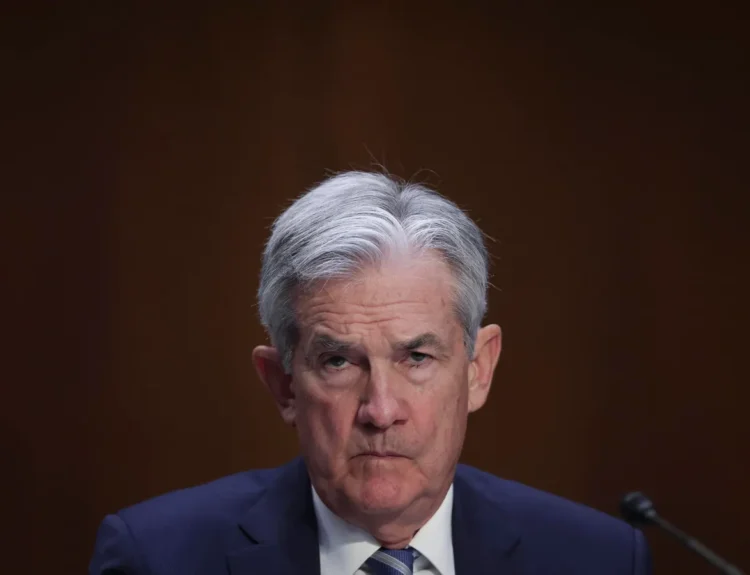Did you know that passive index funds have helped investors save nearly £80 billion in fees over just twelve years? With so much at stake, understanding the key differences between active and passive investing is crucial for anyone hoping to grow their wealth. Each method brings its own risks, rewards, and costs that can shape your financial path in powerful ways. Knowing how these strategies work may help you make smarter choices with your money.
Key Takeaways
| Point | Details |
|---|---|
| Investment Approaches | Active investing involves hands-on management seeking to outperform benchmarks, while passive investing focuses on replicating market performance with minimal trading. |
| Cost Efficiency | Passive investing generally incurs lower fees and fewer tax implications compared to active investing, which often entails higher management costs. |
| Risk Profiles | Active investing carries higher risks due to frequent trading and market speculation, whereas passive investing offers more stability through broad market diversification. |
| Investor Suitability | New investors and those seeking consistent returns may benefit from passive strategies, while experienced investors comfortable with risk may prefer active strategies. |
Table of Contents
- Defining Active And Passive Investing Approaches
- Key Differences: Management Style And Strategy
- Performance, Costs, And Tax Implications Compared
- Assessing Risks And Potential Returns
- Who Should Choose Active Or Passive Investing
Defining Active and Passive Investing Approaches
Investing isn’t a one-size-fits-all strategy. At its core, two fundamental approaches dominate the investment landscape: active and passive investing. According to FINRA, these strategies represent distinctly different methods for managing investment portfolios and achieving financial goals.
In active investing, fund managers or individual investors take a hands-on approach, frequently buying and selling securities with the primary objective of outperforming market benchmarks. These investors conduct extensive research, analyze market trends, and make strategic decisions to maximize returns. It’s like being a financial detective, constantly searching for undervalued stocks or market opportunities that could generate superior performance.
Conversely, passive investing follows a more relaxed, systematic approach. This strategy involves replicating market performance through index funds or exchange-traded funds (ETFs) with minimal trading. As research from Nemo Money highlights, passive strategies offer significant advantages:
- Substantially lower fees (0.03%–0.2% compared to active funds’ 0.5%–2%)
- Reduced tax implications due to less frequent trading
- Consistent performance tracking market indexes
- Lower time and research investment required
While both strategies aim to grow wealth, they appeal to different investor personalities and risk tolerances. Active investing suits those who enjoy market research and are comfortable with potentially higher risks, while passive investing is perfect for investors seeking steady, predictable returns with minimal ongoing management.
Key Differences: Management Style and Strategy
Management style represents the most fundamental distinction between active and passive investing strategies. According to FINRA, each approach offers unique benefits tailored to different investor objectives and risk preferences.
In active management, investors and fund managers take a proactive approach, constantly analyzing market trends, economic indicators, and individual securities. They aim to exploit market inefficiencies by making strategic decisions about sector allocation, timing trades, and selecting specific investments. This approach requires significant research, deep financial knowledge, and the ability to make quick, informed decisions. Active managers believe they can outperform market benchmarks by identifying undervalued assets or predicting market movements.
Conversely, passive management follows a more systematic and hands-off strategy. Research from Off the Box highlights that passive investing relies on market efficiency and minimizes unnecessary trading. Key characteristics include:
- Tracking established market indexes
- Minimizing transaction costs
- Reducing portfolio complexity
- Eliminating frequent trading expenses
- Maintaining consistent market-aligned performance
The strategic difference essentially boils down to control versus consistency. Active investors seek to control and potentially beat market performance, while passive investors accept market returns with lower fees and reduced complexity. Your choice depends on your investment goals, risk tolerance, and willingness to actively manage your portfolio.
Performance, Costs, and Tax Implications Compared
Performance, costs, and tax efficiency are critical factors that differentiate active and passive investing strategies. These dimensions reveal significant variations that can dramatically impact long-term investment outcomes.
When examining performance, the numbers tell a compelling story. According to the Financial Times, only about one-third of active equity managers successfully outperformed passive investment vehicles in recent years. This statistic underscores the challenges active managers face in consistently beating market benchmarks. The extensive research suggests that most active strategies struggle to generate returns that justify their higher management fees and increased trading costs.
Cost differences are particularly striking. European and UK investors demonstrated substantial savings by choosing passive index trackers over actively managed funds. The financial data reveals dramatic fee disparities:
- Average passive equity fund fee: ~0.17%
- Average active equity fund fee: ~0.81%
- Cumulative savings over 12 years: Nearly £80 billion
Tax implications further favor passive investing strategies. Because passive funds trade less frequently, they generate fewer taxable events, which means investors can potentially defer or minimize tax liabilities. Active trading generates more frequent capital gains distributions, potentially creating higher tax burdens for investors. By maintaining a buy-and-hold approach, passive investors can optimize their after-tax returns while reducing overall portfolio complexity.
![]()
Here’s a comparison of how active and passive investing differ across key factors:
| Factor | Active Investing | Passive Investing |
|---|---|---|
| Management Style | Hands-on Strategic trades |
Hands-off Index tracking |
| Goal | Beat market Find mispricings |
Match market Consistent returns |
| Costs | Higher fees Frequent trading |
Lower fees Minimal trading |
| Tax Implications | More taxable events Capital gains |
Fewer taxable events Tax efficient |
| Time Commitment | High Ongoing research |
Low Minimal monitoring |
| Risk Level | Higher Market timing risk |
Lower Broad diversification |
Assessing Risks and Potential Returns
Risk management is the cornerstone of any successful investment strategy, and understanding the risk-return profile of active and passive investing can help you make more informed decisions. While both approaches aim to generate returns, they expose investors to different types and levels of risk.
Active investing inherently carries higher risk due to its dynamic nature. Investors and fund managers make frequent trading decisions based on market predictions, economic indicators, and individual stock analyses. This approach introduces several risk factors:
- Market timing risk: Attempting to predict optimal buying and selling moments
- Selection risk: Potential for choosing underperforming individual securities
- Emotional decision-making risk: Potential for reactive choices during market volatility
- Higher transaction costs that can erode potential gains
Passive investing, by contrast, offers a more risk-mitigated approach. By tracking broad market indexes, these strategies inherently diversify investments across multiple sectors and companies. This approach minimizes individual security risk and provides more predictable returns.
 Learn more about building a robust investment portfolio to understand how passive strategies can balance risk and potential returns.
Learn more about building a robust investment portfolio to understand how passive strategies can balance risk and potential returns.
Ultimately, risk tolerance is personal. Active investing might appeal to investors comfortable with higher risk and potential for above-market returns, while passive investing suits those seeking steady, lower-risk growth. Your investment horizon, financial goals, and comfort with market fluctuations should guide your choice between these two fundamental investment approaches.
Who Should Choose Active or Passive Investing
Choosing between active and passive investing isn’t a one-size-fits-all decision. According to Kiplinger, different investment strategies suit different financial profiles, goals, and personal characteristics.
Passive investing is typically ideal for several investor types:
- New investors building initial portfolios
- Individuals seeking consistent, predictable returns
- Those approaching retirement wanting lower volatility
- Investors prioritizing capital preservation
- People with limited time for active portfolio management
Conversely, active investing might appeal to investors who:
- Have advanced financial knowledge
- Enjoy hands-on investment research
- Seek potentially higher returns in specific market segments
- Are comfortable with increased risk and volatility
- Want targeted exposure to niche or emerging markets
Interestingly, Investopedia suggests a hybrid approach called the core/satellite model. This strategy involves using passive investments as a stable core portfolio foundation while allocating a smaller portion to active investments for potential enhanced returns. Learn about safe investment options to help refine your investment strategy and balance risk with potential growth. Ultimately, your choice should align with your financial goals, risk tolerance, and personal investment philosophy.
Ready to Turn Investment Knowledge into Action?
You have just explored the true differences between active and passive investing, understanding that the real struggle often lies in choosing the strategy that fits your goals, risk comfort, and financial future. Deciding between hands-on trades and a steady buy-and-hold approach can feel overwhelming, especially when performance, costs, and tax implications hang in the balance. When it comes to protecting your wealth and growing your savings, knowledge is only the first step. Now is the moment to seek clear, expert support that makes your investment decisions easier and more confident.
If you want to apply your new understanding or still feel uncertain about going active or passive, let our team guide you. Visit finblog.com and unlock tailored investment insights that fit your needs. Dive even deeper by discovering more about building a robust investment portfolio and explore safe investment options designed to manage risk while aiming for real growth. Start shaping your future today with a partner who understands your investment challenges and is here to help you move forward.
Frequently Asked Questions
What is the main difference between active and passive investing?
Active investing involves frequent buying and selling of securities with the goal of outperforming market benchmarks, while passive investing aims to replicate market performance through index funds or ETFs with minimal trading.
What are the cost implications of active versus passive investing?
Active investing typically incurs higher fees (0.5%–2%) due to frequent trading, whereas passive investing has lower fees, ranging from 0.03% to 0.2%, resulting in substantial savings over time.
Which investment strategy is better for beginners?
Passive investing is generally better for beginners as it provides consistent, predictable returns with minimal management, making it ideal for individuals with limited investment experience or time.
What are the risks associated with active investing?
Active investing carries higher risks, including market timing risk, selection risk, and the potential for emotional decision-making during market volatility due to its dynamic trading nature.










